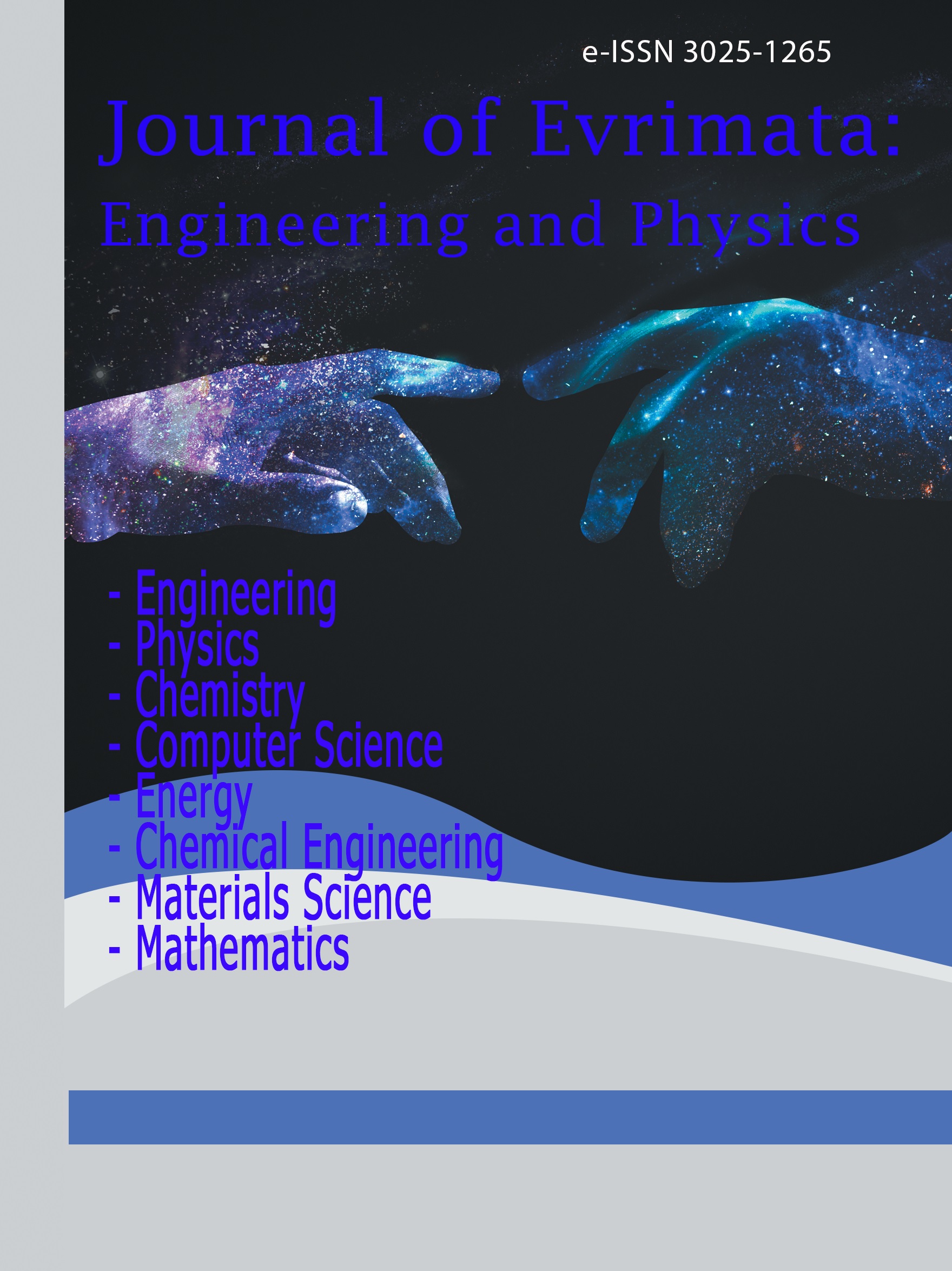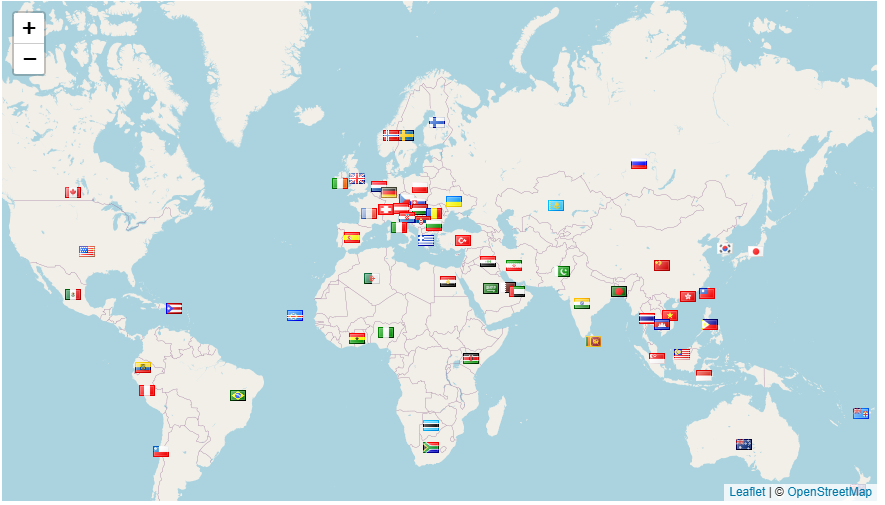Simulation of The Effect of Blank Geometry Toward The Mecanical Properties of Strains And Stress on Deep Drawing Process Using Material Aluminum 7075
DOI:
https://doi.org/10.70822/journalofevrmata.vi.27Keywords:
Deep Drawing, Blank Geometri, Alumunium 7075, SimulationAbstract
Using Aluminum 7075 at a high temperature of 50 degrees Celsius, this study examines the effect of various blank geometry angles on the mechanical properties of strain and stress during the deep drawing process. This study systematically examines the impact of different blank geometry angles on the deformation behavior, strain distribution, and stress concentration during the deep drawing process of Aluminum 7075 sheet using a numerical simulation approach. To describe the behavior of the material against the effect of the angle on the pressure in the simulation taking into account realistic parameters, the main point is the result of the pressure treatment of the predetermined angle on the results of the strains and stresses created. The obtained results, which include strain distribution, stress concentration, and overall mechanical reaction, provide important information for the choice of the best blank geometry angle in deep drawing of Aluminum 7075 at high temperatures. This research contributes to the advancement of process optimization in the metal forming industry, providing a solid foundation for improving efficiency and quality in deep drawing operations involving high-strength aluminum alloys.
References
J. Cao et al., “Manufacturing of advanced smart tooling for metal forming,” CIRP Annals, vol. 68, no. 2, pp. 605–628, Jan. 2019, doi: 10.1016/j.cirp.2019.05.001.
C. Wang, R. Ma, J. Zhao, and J. Zhao, “Calculation method and experimental study of coulomb friction coefficient in sheet metal forming,” J Manuf Process, vol. 27, pp. 126–137, Jun. 2017, doi: 10.1016/j.jmapro.2017.02.016.
N. Park, H. Huh, S. J. Lim, Y. Lou, Y. S. Kang, and M. H. Seo, “Fracture-based forming limit criteria for anisotropic materials in sheet metal forming,” Int J Plast, vol. 96, pp. 1–35, Sep. 2017, doi: 10.1016/j.ijplas.2016.04.014.
D. R. Cooper, K. E. Rossie, and T. G. Gutowski, “The energy requirements and environmental impacts of sheet metal forming: An analysis of five forming processes,” J Mater Process Technol, vol. 244, pp. 116–135, Jun. 2017, doi: 10.1016/j.jmatprotec.2017.01.010.
O. M. Ikumapayi, E. T. Akinlabi, P. Onu, and O. P. Abolusoro, “Rolling operation in metal forming: Process and principles - A brief study,” in Materials Today: Proceedings, Elsevier Ltd, 2019, pp. 1644–1649. doi: 10.1016/j.matpr.2020.02.343.
V. L. Hattalli and S. R. Srivatsa, “Sheet Metal Forming Processes-Recent Technological Advances,” 2018. [Online]. Available: www.sciencedirect.comwww.materialstoday.com/proceedings2214-7853
W. Zhou, J. Lin, D. S. Balint, and T. A. Dean, “Clarification of the effect of temperature and strain rate on workpiece deformation behaviour in metal forming processes,” Int J Mach Tools Manuf, vol. 171, Dec. 2021, doi: 10.1016/j.ijmachtools.2021.103815.
W. E. King et al., “Simulation and modeling of the metal powder bed fusion additive manufacturing process,” 2014.
B. J. Ralph, A. Schwarz, and M. Stockinger, “An implementation approach for an academic learning factory for the metal forming industry with special focus on digital twins and finite element analysis,” in Procedia Manufacturing, Elsevier B.V., 2020, pp. 253–258. doi: 10.1016/j.promfg.2020.04.103.
J. M. P. Martins, J. L. Alves, D. M. Neto, M. C. Oliveira, and L. F. Menezes, “Numerical analysis of different heating systems for warm sheet metal forming,” International Journal of Advanced Manufacturing Technology, vol. 83, no. 5–8, pp. 897–909, Mar. 2016, doi: 10.1007/s00170-015-7618-9.
M. Sigvant et al., “Friction in sheet metal forming: Influence of surface roughness and strain rate on sheet metal forming simulation results,” in Procedia Manufacturing, Elsevier B.V., 2019, pp. 512–519. doi: 10.1016/j.promfg.2019.02.169.
M. P. Shisode, J. Hazrati, T. Mishra, M. de Rooij, and T. van den Boogaard, “Modeling mixed lubrication friction for sheet metal forming applications,” in Procedia Manufacturing, Elsevier B.V., 2020, pp. 586–590. doi: 10.1016/j.promfg.2020.04.180.
I. Mashudi, M. Fakhruddin, and A. Hardjito, “The effect of strain hardening on the limit forming ratio on the single-step incremental hole flanging process on aluminium plates,” IOP Conf Ser Mater Sci Eng, vol. 1073, no. 1, p. 012079, Feb. 2021, doi: 10.1088/1757-899x/1073/1/012079.
V. Paunoiu, M. A. Saadatou, D. Nedelcu, and M. Octavian, “Experimental and numerical investigations of sheet metal circular bending,” 2015.
S. Bruschi et al., “Testing and modelling of material behaviour and formability in sheet metal forming,” CIRP Ann Manuf Technol, vol. 63, no. 2, pp. 727–749, 2014, doi: 10.1016/j.cirp.2014.05.005.
Z. Lai et al., “A comprehensive electromagnetic forming approach for large sheet metal forming,” in Procedia Engineering, Elsevier Ltd, 2017, pp. 54–59. doi: 10.1016/j.proeng.2017.10.737.
Z. Gronostajski et al., “Recent development trends in metal forming,” Archives of Civil and Mechanical Engineering, vol. 19, no. 3. Elsevier B.V., pp. 898–941, May 01, 2019. doi: 10.1016/j.acme.2019.04.005.
A. E. Tekkaya, P.-O. Bouchard, S. Bruschi, C. C. Tasan, and P.-O. Bouchard, “Damage in metal forming,” CIRP Annals-Manufacturing Technology, vol. 2020, no. 2, pp. 600–623, doi: 10.1016/j.cirp.2020.05.005ï.
C. V. Nielsen, P. A. F. Martins, and N. Bay, “Modelling of real area of contact between tool and workpiece in metal forming processes including the influence of subsurface deformation,” CIRP Ann Manuf Technol, vol. 65, no. 1, pp. 261–264, 2016, doi: 10.1016/j.cirp.2016.04.126.
M. Fakhruddin and M. Agus Choiron, “The Influence of Process Parameters toward Collar Height on Incremental Backward Hole-Flanging Process,” JEMMME, vol. 2, no. 1, 2017.
H. Güler and R. Özcan, “Comparison of hot and cold stamping simulation of Usibor 1500 prototype model,” 2014.
A. A. Petunin and C. Stylios, “Optimization Models of Tool Path Problem for CNC Sheet Metal Cutting Machines,” in IFAC-PapersOnLine, Elsevier B.V., 2016, pp. 23–28. doi: 10.1016/j.ifacol.2016.07.544.
I. Mashudi, M. Fakhruddin, and A. Hardjito, “Forming parameters effect toward flange height on single-step incremental backward hole flanging process,” in AIP Conference Proceedings, American Institute of Physics Inc., Apr. 2023. doi: 10.1063/5.0126731.
K. Dohda, M. Yamamoto, C. Hu, L. Dubar, and K. F. Ehmann, “Galling phenomena in metal forming,” Friction, vol. 9, no. 4. Tsinghua University, pp. 665–685, Aug. 01, 2021. doi: 10.1007/s40544-020-0430-z.
W. Wang, Y. Zhao, Z. Wang, M. Hua, and X. Wei, “A study on variable friction model in sheet metal forming with advanced high strength steels,” Tribol Int, vol. 93, pp. 17–28, Jan. 2016, doi: 10.1016/j.triboint.2015.09.011.
L. Ben Said, J. Mars, M. Wali, and F. Dammak, “Effects of the tool path strategies on incremental sheet metal forming process,” Mechanics and Industry, vol. 17, no. 4, 2016, doi: 10.1051/meca/2015094.
H. Zhang, M. Diehl, F. Roters, and D. Raabe, “A virtual laboratory using high resolution crystal plasticity simulations to determine the initial yield surface for sheet metal forming operations,” Int J Plast, vol. 80, pp. 111–138, May 2016, doi: 10.1016/j.ijplas.2016.01.002.
A. Al-Tamimi, R. Darvizeh, and K. Davey, “Experimental investigation into finite similitude for metal forming processes,” J Mater Process Technol, vol. 262, pp. 622–637, Dec. 2018, doi: 10.1016/j.jmatprotec.2018.07.028.
D.-Y. Yang et al., “Title: Flexibility in Metal Forming Flexibility in Metal Forming.” [Online]. Available: www.elsevier.com/locate/cirp
V. Mugendiran and A. Gnanavelbabu, “Analysis of formability and twist angle in AA5052 alloy by single point incremental forming process,” 2018.
Downloads
Published
Issue
Section
License
Copyright (c) 2023 Adjie Yoga Pratama, Auzini Widyasari, Muhammad Fakhruddin, Mochamad Muzaki, Hilmi Iman Firmansyah

This work is licensed under a Creative Commons Attribution 4.0 International License.







